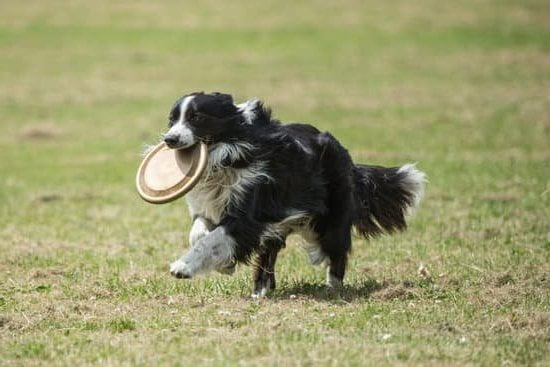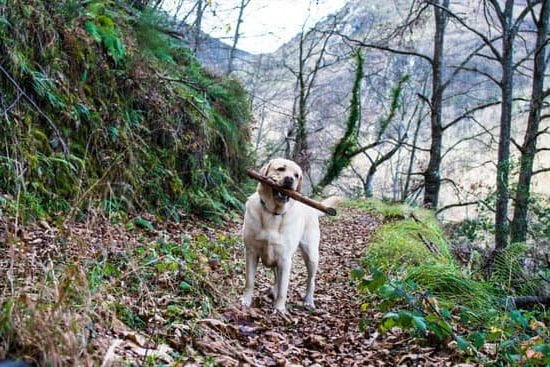When it comes to potty training dogs, there are several important factors to consider. Understanding the significance of potty training is crucial for dog owners who want to set their furry friends up for success.
This article will explore the timeline for potty training, signs of readiness in puppies, creating a suitable environment, principles for success, effective techniques and methods, troubleshooting common challenges, transitioning to outdoor potty training, the role of positive reinforcement, age considerations, and ultimately how proper potty training can lead to a well-adjusted and happy dog.
Potty training is more than just teaching your dog where to go to the bathroom. It plays a vital role in establishing good hygiene habits and preventing unpleasant accidents in your home. By properly training your dog to go outside or on designated indoor pee pads, you can ensure that they understand where it’s appropriate to relieve themselves.
The first step in successful potty training is understanding when to start. Puppies have a natural development timeline that determines their readiness for this important skill. Additionally, recognizing the signs that your dog is ready for potty training is essential; this helps prevent frustration and sets both you and your furry friend up for success.
In this article, we will dive deeper into these fundamental aspects of potty training dogs. By exploring the best methods and techniques, troubleshooting common challenges, discussing when and how to transition to outdoor potty training, considering age factors, and highlighting the importance of positive reinforcement along the way, we hope to provide you with a comprehensive guide that will help you successfully train your beloved canine companion.
The Natural Development Timeline
Puppies, just like human babies, go through various developmental stages as they grow. These stages play a crucial role in determining when to start potty training your puppy. Understanding the natural development timeline can help you identify the appropriate time to begin the process.
- Newborn Stage: During this stage, which lasts for the first few weeks of their life, puppies are completely dependent on their mother for everything, including elimination. They cannot control their bladder or bowel movements and rely on their mother to clean them.
- Transitional Stage: Around 3-4 weeks old, puppies begin to gain some control over their bodily functions. They will start to move away from their sleeping area to eliminate and show signs of attempting to potty away from where they eat and sleep.
- Socialization Stage: From 7-16 weeks old, puppies enter the socialization period when they become more aware of their surroundings and readily learn from experiences. It is during this stage that you can introduce basic potty training concepts such as designated potty areas and encouraging them to eliminate outside.
- Adolescence Stage: This stage typically occurs around 4-8 months old when puppies reach sexual maturity and experience hormonal changes. Training during this phase can be challenging as dogs may exhibit more independence and resistance to instruction.
It is important to note that each puppy is unique and may progress through these stages at different rates. Some indicators that your puppy is ready for potty training include being able to stay dry for longer periods (indicating better bladder control), displaying signs of restlessness or sniffing around before eliminating, and showing an understanding of basic commands such as “sit” or “stay”.
By taking into account these developmental milestones, you can determine an appropriate starting point for potty training your puppy. Remember that consistency, patience, and positive reinforcement are key principles in successfully teaching your dog where it is appropriate to eliminate.
Crucial Signs of Readiness
When embarking on potty training for your dog, it is crucial to ensure that they are ready and receptive to the process. Not all dogs will be ready at the same age or stage of development, so it is important to pay attention to signs of readiness before starting the training. Here are some crucial signs that indicate your dog is ready for potty training:
Consistency in Bathroom Habits
One of the primary signs that your dog may be ready for potty training is consistency in their bathroom habits. If you notice that your dog starts to exhibit regular patterns, such as going outside after meals or waking up from a nap, it may be a sign that they are ready to be trained.
Behavioural Changes
Look out for any changes in your dog’s behavior when it comes to their bathroom habits. They may start sniffing around certain areas, pacing, or circling before eliminating. These behavioral changes show that they are becoming more aware of their body’s cues and have started associating these cues with elimination.
Physical Indications
Keep an eye out for physical indications like squatting or raising their leg as if they are preparing to urinate or defecate. These gestures suggest that your dog is recognizing and preparing themselves for elimination.
To determine if your dog is truly ready for potty training, it is essential to look for a combination of these signs rather than relying on just one indicator. Observing consistency in bathroom habits, behavioral changes related to elimination, and physical indications will help you gauge your dog’s readiness accurately.
Engaging in potty training when your dog is truly prepared will ensure a smoother process overall and increases the likelihood of success in a shorter period of time. Remember, patience and consistency remain key throughout the entire potty training journey with your furry friend.
Setting the Right Environment
Creating the right environment is crucial for successful potty training. Dogs need a safe and suitable setup that encourages them to use a designated potty area, whether it’s indoors or outdoors. By setting up the right environment, you can effectively train your dog to understand where they should go to relieve themselves.
Choose a Designated Potty Area
When creating a potty training setup, it’s important to choose a designated area where your dog can go to eliminate. This could be an indoor space such as a bathroom or laundry room, or an outdoor area in your yard. Selecting a specific spot helps to establish consistency and allows your dog to associate the location with going potty.
Use Appropriate Potty Training Tools
In addition to choosing a designated area, there are various tools and products that can aid in creating the right environment for potty training. Puppy pads or artificial grass mats can be used indoors as a temporary solution while your dog is learning. For outdoor setups, consider using an easily cleanable surface such as gravel or rubber mats.
Remove Potential Distractions
To create an optimal potty training environment, it’s important to remove any potential distractions that may hinder your dog’s focus on using the designated potty area. Keep toys and other items away from the designated spot so that your dog understands this space is only for eliminating waste.
When setting up the environment for potty training, always keep safety in mind. Ensure that any cleaning agents or chemicals are kept out of reach from your dog, especially if you’re using an indoor setup. Additionally, make sure that the designated potty area is easy for your dog to access without any obstacles in their way.
By creating a safe and suitable potty training setup, you provide your dog with clear guidelines on where they should go to relieve themselves. This consistency will significantly contribute to their overall potty training success.
Patience and Consistency
Potty training a dog can be a challenging process, but with patience and consistency, it can also be rewarding for both the owner and the dog. These two principles are crucial in ensuring successful potty training for your furry friend.
Patience: Taking it One Step at a Time
One of the most important things to remember during potty training is to be patient. Dogs learn at their own pace, and expecting them to master the skill of potty training overnight is unrealistic. It’s important to keep in mind that accidents will happen, especially in the beginning stages of training. Instead of getting frustrated or angry, remain calm and understand that this is just part of the learning process.
It’s also essential to avoid punishing your dog for accidents. Punishment will only confuse them and may lead to anxiety or fear around the potty training process. Instead, focus on positive reinforcement whenever your dog successfully goes potty outside or in their designated indoor space.
Consistency: Stick to a Routine
Consistency is another key principle when it comes to successful potty training. Dogs thrive on routines, so establishing a consistent schedule will help them understand where and when they should go potty.
Create a routine by taking your dog out to their designated potty area first thing in the morning, after meals, after naps, and before bed. This helps them associate these times with going potty and reduces the chances of accidents indoors.
Another aspect of consistency involves using consistent commands or cues during potty training. Choose simple verbal cues such as “go potty” or “do your business” so that your dog associates these words with the action they need to take.
By being patient throughout the process and maintaining consistency in both routine and commands, you are setting your dog up for success in their potty training journey. Remember that every dog is different, and it may take some time for them to fully grasp the concept. Stay positive, celebrate their successes, and be patient during setbacks. With time and consistent training, your dog will become fully potty trained, leading to a happier and healthier companionship between you both.
Effective Techniques and Methods
Finding the best approach for potty training your dog can be a process of trial and error. Every dog is different, so it is important to find techniques and methods that work best for your individual pet. Here are some effective strategies that you can try when potty training your dog:
- Crate Training: Many pet owners find success in using crate training as a method for potty training their dogs. Dogs naturally have an instinct to keep their sleeping area clean, so by using a crate, you can encourage them to hold their bladder until they are let outside. Make sure to choose a crate that is the appropriate size for your dog, providing enough space for them to stand up, turn around, and lie down comfortably.
- Paper Training: Paper training is another method that can be effective for potty training dogs, especially those who live in apartments or don’t have immediate access to outdoor spaces. In this technique, you designate a specific area in your home where you lay down newspaper or puppy pads. Gradually reduce the size of the papered area over time until your dog is consistently using only one spot.
- Regular Schedule: Establishing a regular schedule is crucial when potty training your dog. Take them outside at consistent times throughout the day, such as first thing in the morning, after meals and naps, before bedtime, and every few hours in between. By providing structure and routine, you can help them develop good bathroom habits.
| Technique/Method | Description |
|---|---|
| Crate Training | This method uses a crate to encourage dogs to hold their bladder until they are let outside. |
| Paper Training | Dogs are trained to use a designated area in the home with newspaper or puppy pads. |
| Regular Schedule | Establishing a consistent schedule for bathroom breaks helps dogs develop good habits. |
Remember, potty training takes time and patience. Consistency is key, and accidents are normal during the process. Always reward your dog when they go potty in the appropriate spot, whether it’s through praise, treats, or playtime. It is important to remain positive and avoid punishment, as this can create fear or confusion for your dog.
In addition to these techniques, consider using verbal cues or visual markers to reinforce where you want your dog to go potty. Eventually, they will associate these cues with the correct behavior. With persistence and positive reinforcement, you can find the best approach for your dog and successfully potty train them.
Overall, finding the right technique and method for potty training your dog requires understanding their individual needs and preferences. Be flexible in your approach, be patient with accidents along the way, and celebrate each success as your furry friend makes progress toward becoming fully potty trained.
Troubleshooting Challenges
Addressing common challenges that arise during the potty training process is crucial for ensuring success. While each dog is unique, there are some common issues that many dog owners face. The following section will discuss these challenges and provide effective strategies to overcome them.
- Accidents: It is normal for puppies to have accidents as they are learning where to go potty. If your dog has an accident indoors, it is important not to scold or punish them, as this can create a negative association with the act of eliminating waste.
Instead, calmly clean up the mess and take note of any patterns or triggers that may have contributed to the accident. Increase supervision and make sure to give your dog plenty of opportunities to go outside. - Inconsistent Timing: Consistency is key when it comes to potty training. Establish a regular feeding schedule for your dog and take them outside shortly after meals. Additionally, take your dog outside first thing in the morning, before bedtime, and after naps or play sessions. By consistently providing these opportunities for your dog to eliminate outside, you can reinforce the desired behavior.
- Resistance or Fear: Some dogs may show resistance or fear towards the potty training process. This can be due to various factors such as previous negative experiences or anxiety issues. To address this challenge, create a positive and supportive environment by using treats, praise, and affection when your dog successfully eliminates outside. Gradually introduce them to new environments and surfaces while monitoring their reactions closely.
- Marking Behavior: Marking refers to when a dog urinates in small amounts on vertical surfaces as a way of marking their territory. This behavior can be more challenging to address but can be managed through consistent training techniques such as redirecting their attention, using belly bands or diapers indoors, and thoroughly cleaning any marked areas with an odor neutralizer.
By recognizing these common challenges and implementing appropriate strategies, you can ensure a more successful potty training experience for your dog. Consistency, patience, and positive reinforcement are key throughout the process. Remember, each dog is unique, so it may take time to find what works best for your canine companion.
Transitioning to Outdoor Potty Training
As your dog progresses in their potty training journey, transitioning from indoor to outdoor potty training becomes an important milestone. This section will guide you through the process of when and how to make this shift, ensuring a smooth and successful transition for both you and your furry companion.
When is the right time?
The timing of transitioning to outdoor potty training depends on various factors such as your dog’s age, breed, and individual development. Generally, most puppies should have a good grasp of indoor potty training before moving on to outdoor training. It is essential that your puppy consistently shows signs of readiness and has established a routine for eliminating indoors before progressing to outdoor training.
Typically, puppies start showing signs of increased bladder control around three to four months old. At this point, they can hold their bladder for longer periods and better understand the concept of holding their urine until they are taken outside. However, every dog is different, so it’s crucial to monitor your puppy’s progress and consult with a veterinarian or professional trainer if needed.
How to make the transition
To successfully transition from indoor to outdoor potty training, it is important to gradually introduce your dog to the outside environment. Start by taking them out in a small designated area within your yard consistently after meals, naps, or playtime. Be patient during this process as it may take some time for your dog to associate going outside with toileting.
Creating a consistent routine is key during this phase. Take your dog out at specific times throughout the day, especially upon waking up in the morning or after extended periods indoors. Use verbal cues like “go potty” or “do your business” while they eliminate so that they begin associating those phrases with going outside.
Remember that accidents may still happen during this transitional period. If your dog starts to have accidents indoors again, it is essential not to scold or punish them. Instead, reinforce the outside potty training by calmly redirecting them outdoors and praising them for eliminating in the appropriate location.
By following these guidelines, you can ease the transition to outdoor potty training and set your dog up for success in maintaining proper toilet habits as they grow older. Remember that consistency, patience, and positive reinforcement are crucial during this phase of training.
Importance of Positive Reinforcement
Positive reinforcement plays a crucial role in potty training dogs. It involves rewarding and encouraging desired behaviors, such as going to the designated potty area. By using positive reinforcement techniques, dog owners can create a positive association with the act of eliminating in the appropriate location, making it more likely that their pets will continue to do so in the future.
One effective method of positive reinforcement is to use treats or verbal praise as rewards. When a dog successfully eliminates in the designated potty area, immediately provide them with a small treat and offer enthusiastic praise. This helps to reinforce the connection between the desired behavior and the reward, motivating the dog to repeat it.
Another way to encourage your dog during potty training is through physical affection. Dogs thrive on human touch and attention, so giving them a pat on the head or a belly rub after they eliminate in the right spot can reinforce their good behavior and further strengthen their desire to continue doing so.
Consistency is key when using positive reinforcement for potty training. It is important to reward your dog every time they exhibit the desired behavior until they have mastered it. As your dog becomes more consistent with using the designated potty area, you can gradually reduce the frequency of rewards, but it is still important to occasionally praise and reward them to maintain their motivation.
Age Considerations
When it comes to potty training dogs, many pet owners wonder about the optimal age to begin this process. While there is no one-size-fits-all answer, understanding age considerations can help guide you in determining the best time to start potty training your furry friend.
Puppies have smaller bladders and less control over their bodily functions compared to adult dogs. Therefore, it is generally recommended to start potty training as early as possible. The American Kennel Club suggests beginning training as soon as you bring your puppy home, around 8 weeks of age. At this stage, puppies are more receptive to learning new behaviors and establishing routines.
However, it’s important to note that every dog is different, and some may develop physically and mentally at a faster or slower pace than others. Some breeds may also mature more quickly than others. For example, small breeds tend to have quicker metabolism rates and therefore may need more frequent bathroom breaks compared to larger breeds.
To determine if your dog is ready for potty training, look out for certain signs of readiness such as sniffing around the house or circling before eliminating, showing discomfort when holding urine or feces, or exhibiting restlessness when needing to go outside. These signs indicate that your dog has developed enough bladder control and awareness of their bodily functions to begin potty training.
Considering the importance of starting early while also being mindful of your individual dog’s development will help you establish a suitable timeline for potty training. Remember that consistency, patience, and positive reinforcement play crucial roles in successful potty training regardless of the age at which you start.
Conclusion
Proper potty training is essential for setting your dog up for success in their daily life. It not only ensures cleanliness and hygiene in your home but also helps establish a strong bond between you and your furry friend. Throughout this article, we have discussed various aspects of potty training, from understanding the importance of it to finding the best approach for your dog.
One key takeaway from this article is that timing is crucial when it comes to potty training. Starting early, as soon as you bring your puppy home, can greatly speed up the process. However, it’s important to recognize the signs of readiness in your dog before diving into training. Being patient and consistent throughout the process will be key to achieving success.
Creating a safe and suitable environment for potty training is also critical. Establishing a designated area, whether indoors or outdoors, where your dog can go relieve themselves without fear or distraction is important. Additionally, incorporating positive reinforcement techniques such as rewards and encouragement can go a long way in motivating your dog throughout their potty training journey.
Transitioning to outdoor potty training should also be considered at some point. Gradually introducing your dog to outdoor environments and continuing to reinforce good habits will help them develop the skills needed for navigating different spaces when they need to use the bathroom.
In conclusion, by following these guidelines and implementing proper potty training techniques, you are setting your dog up for success. Remember, consistency, patience, and positive reinforcement are key factors in ensuring a well-trained and happy dog who understands where and when it’s appropriate to relieve themselves. With dedication and love, you can create a harmonious living environment with your furry companion.
Frequently Asked Questions
When should a dog be fully potty trained?
The timeline for when a dog should be fully potty trained can vary depending on several factors, including the individual dog’s breed, age, and previous training experiences. On average, most dogs can be considered fully potty trained between 4 to 6 months of age. However, it is essential to understand that every dog is unique and may progress at their own pace.
Some dogs may achieve full potty training earlier, while others may take a bit longer. Consistency in training, positive reinforcement, patience, and understanding your dog’s cues are crucial elements in successfully potty training your furry friend.
What dog breeds are hardest to potty train?
While there isn’t a specific breed that universally poses the most significant challenge in potty training, some dog breeds can be more difficult due to various characteristics. Smaller toy breeds or breeds known for being stubborn like the Chihuahua or Dachshund can sometimes present more challenges during potty training due to their size or independent nature.
Additionally, certain terrier breeds may also require extra effort as they tend to have strong instincts related to digging and scent-marking. However, it’s important to note that with proper training techniques and consistency, any breed can ultimately become successfully potty trained.
Is 4 months too late to potty train a dog?
Four months of age is not too late to start or continue potty training a dog. While it is generally recommended to begin house training during puppyhood around 8-12 weeks old when they have better bladder control, dogs can continue learning throughout their lives.
At four months old, many dogs still have room for improvement and are capable of becoming fully potty trained with consistent guidance from their owners. It might take a bit more effort and patience compared to starting earlier, but by implementing positive reinforcement techniques such as rewarding successful elimination outside and setting up regular bathroom schedules, you can work towards effectively managing your dog’s toileting habits regardless of their age.

Welcome to the blog! I am a professional dog trainer and have been working with dogs for many years. In this blog, I will be discussing various topics related to dog training, including tips, tricks, and advice. I hope you find this information helpful and informative. Thanks for reading!





